The middleweight adventure category (roughly 650–900cc bikes) offers a balance of power, comfort, and off-road ability for long-distance touring and dirt riding. These bikes are lighter and more nimble than heavyweight ADV models, yet more powerful and road-oriented than dirt bikes. For 2025, manufacturers have updated or introduced several standout middleweights. Below are ten top […]
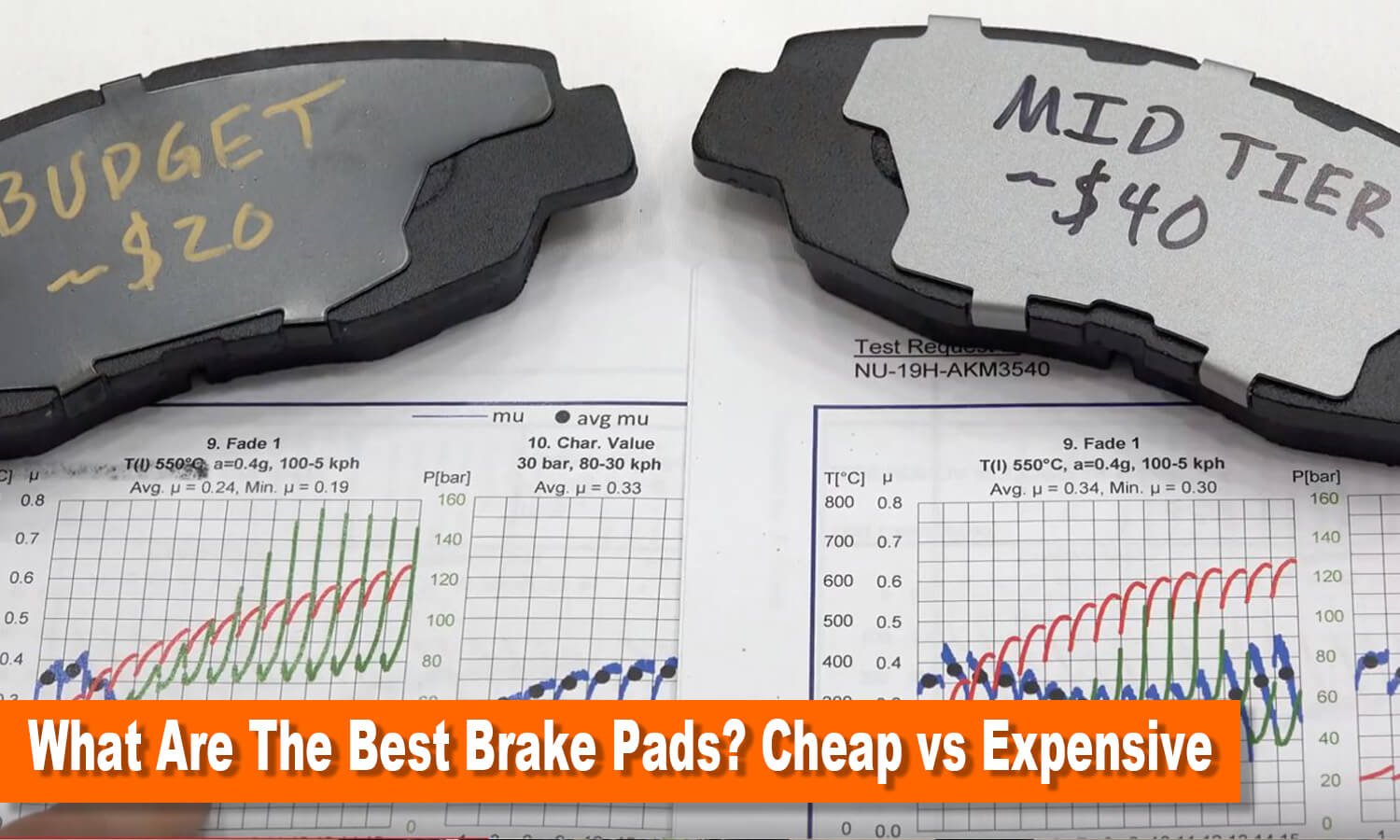
What Are The Best Brake Pads? Cheap vs Expensive
Picking the perfect brake pads for your ride has an influence on how safe you are, how well your whip handles, and what you’ll shell out over time. You’ve got a whole menu, from wallet-easy organic pads to fancy ceramic or semi-metallic types. To get why budget brake pads ain't the same as the pricier ones, you gotta dig into the details. This rundown spells out the good stuff, the not-so-good stuff, and the major stuff to think about for a choice you can trust.
Table of Contents
Understanding Brake Pad Types: Materials Matter
Brake pads are categorized by their composition, which directly affects their performance, durability, and cost. The three primary types are organic, semi-metallic, and ceramic brake pads.
1. Organic Brake Pads
Composition: Made from non-metallic materials like rubber, glass, Kevlar, and resin.

organic brake pads
Pros:
- Quiet operation: Ideal for drivers prioritizing noise reduction.
- Affordable: Typically the cheapest option, suitable for light-duty use.
- Eco-friendly: Produce less environmental impact during manufacturing.
Cons:
- Short lifespan: Wear out faster, especially under heavy braking.
- Heat sensitivity: Prone to brake fade in high-temperature conditions.
Best for: Daily commuters in urban environments with moderate driving demands.
2. Semi-Metallic Brake Pads
Composition: A blend of metal fibers (steel, copper) and synthetic materials.
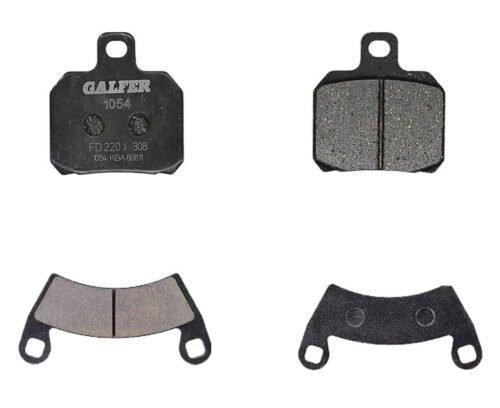
Semi-metallic brake pads
Pros:
- Durability: Longer lifespan than organic pads.
- Heat resistance: It performs well under heavy braking or towing.
- Versatility: It is Suitable for trucks, SUVs, and performance vehicles.
Cons:
- Noise: Can produce squealing, especially when cold.
- Brake dust: Requires frequent wheel cleaning.
Best for: Heavy-duty vehicles, frequent towing, or spirited driving.
3. Ceramic Brake Pads
Composition: Ceramic fibers and copper particles bonded under high pressure.
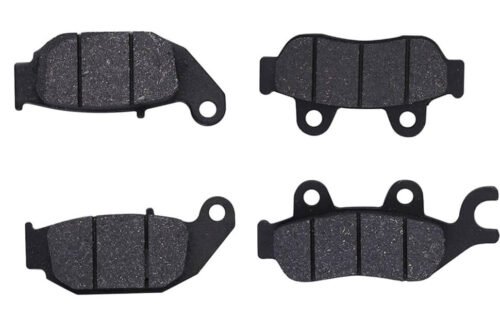
ceramic brake pads
Pros:
- Quiet and smooth: Minimal noise and vibration.
- Low dust: Keep wheels cleaner compared to other types.
- Longevity: Outlast organic and semi-metallic pads.
Cons:
- High cost: Most expensive option.
- Cold-weather limitations: Less effective in extreme cold.
Best for: Luxury cars, high-performance vehicles, and drivers seeking low-maintenance solutions.
Cheap vs Expensive Brake Pads: Key Differences
Performance and Durability
- Cheap Pads: Budget-friendly organic or low-steel pads wear faster and struggle under stress. Tests show they may warp rotors, produce excess dust, and fail in extreme conditions.
- Expensive Pads: Premium ceramic or semi-metallic pads offer consistent performance, better heat dissipation, and reduced rotor wear. Brands like Brembo or Akebono use advanced materials for longevity.
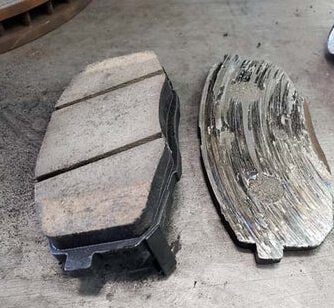
Worn brake pads
Safety and Reliability
- Cheap Pads: Prone to brake fade (reduced stopping power under heat) and corrosion. Tests reveal rust buildup on budget pads, compromising structural integrity.
- Expensive Pads: Engineered for reliability. For example, ceramic pads maintain performance during aggressive braking, while OEM (Original Equipment Manufacturer) pads meet strict safety standards.
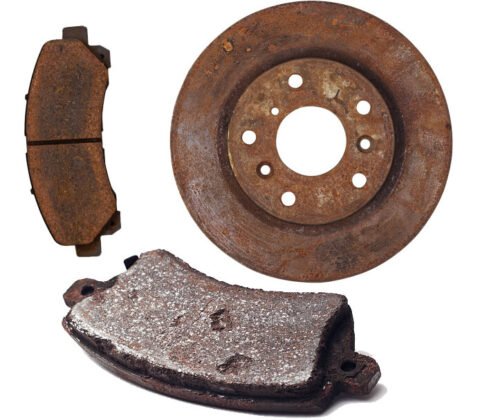
Rusty motorcycle brake pads
Cost vs Long-Term Value
- Cheap Pads: Lower upfront cost but may require frequent replacements. A 30-organic pad lasting 20,000 miles could cost more than an 80 ceramic pad lasting 60,000 miles.
- Expensive Pads: Higher initial investment but save money through longevity and reduced rotor damage. Mid-tier options often strike the best balance between cost and quality.
Factors Influencing Brake Pad Costs
1. Material Quality
Premium pads use superior raw materials like high-density ceramics or copper-infused semi-metallic compounds. These materials enhance heat resistance and reduce wear.
2. Brand Reputation
Established brands invest in rigorous testing and quality control. Their pads often include noise-reducing shims and anti-corrosion coatings.
3. Warranties
Many mid-tier and premium pads come with lifetime warranties, allowing free replacements if they wear prematurely. Budget pads rarely offer this.
4. Included Hardware
Higher-priced kits often include abutment clips, lubricants, and wear sensors, ensuring proper installation and performance.
How to Choose the Right Brake Pads
1. Assess Your Driving Habits
Daily commuting: Ceramic or organic pads for quiet, low-dust performance.
Towing/hauling: Semi-metallic pads for heat resistance and durability.
Performance driving: Carbon-metallic or track-focused pads for maximum stopping power.
2. Consider Climate
Ceramic pads may underperform in icy conditions, while semi-metallic pads excel in all weather.

Motorcycle on icy road
3. Vehicle Compatibility
Check your owner’s manual for manufacturer recommendations. Heavy vehicles like trucks often require semi-metallic pads.
4. Budget vs Long-Term Savings
Mid-tier pads often provide the best value, balancing cost and durability. Avoid ultra-cheap pads from unknown brands.
Common Myths Debunked
Myth 1: "Expensive Pads Are Always Better"
Reality: While premium pads excel in specific scenarios (e.g., racing), mid-tier options often match OEM performance at a lower cost. Tests show that a 400 brake kit can outperform factory brakes, but a 4,000 racing setup isn’t 10 times better.
Myth 2: "Cheap Pads Ruin Rotors"
Reality: Rotor wear depends more on pad material than price. Organic pads are gentler on rotors, while semi-metallic pads may accelerate wear despite their higher cost.
Myth 3: "All Aftermarket Pads Are Inferior"
Reality: Many aftermarket pads meet or exceed OEM standards. Some brands use OE-equivalent materials for safety and performance.
Final Recommendations
- For Most Drivers: Mid-tier ceramic or semi-metallic pads (e.g., Centric, Akebono) offer the best balance of cost, noise, and longevity.
- Budget-Conscious Drivers: Opt for reputable organic pads with lifetime warranties (e.g., Duralast, BrakeBest).
- Performance Enthusiasts: Invest in carbon-metallic or high-friction pads for track use or heavy-duty towing.
Conclusion
Your motorcycle, how you ride, and what you wanna spend govern which brake pads are the "best." Fancy ceramic or semi-metallic ones are top-notch for lasting a long time and working great, but there are mid-level choices that are just as good and won't break the bank.
You should skip the super cheap ones for important stuff, but more expensive doesn't mean they're the best. Focus on the stuff the pads are made of, how good the brand is, and what you need, and you'll be set up with brakes that work well and don't cost a fortune.

Motorcycle mechanic, writer. Interested in motorcycle gear for years. Like to stay up to date with the newest products and techniques of the motorcycle.
If you're looking for a new motorcycle intercom system this year, Fodsports has something exciting in store. The company has launched two new Bluetooth helmet intercoms: T1 and T1 Pro. Both models bring upgraded features, sleek design, and high-definition audio quality for riders who want to stay connected, entertained, and safe on the road. But […]
Fodsports T1 and T1 Pro: The Newest Bluetooth Intercoms for Riders Shop Fodsports T1 Pro Whether you’re cruising on highways, exploring rugged trails, or commuting daily, clear communication is key. Fodsports is thrilled to launch its latest Bluetooth intercoms: the T1 and T1 Pro. Built for riders who demand reliability, versatility, and crystal-clear sound, these […]
By 2025, motorcycle makers had stretched the limits of speed, style, and innovation. They present their top models, ranging from rare cruisers to powerful superbikes. This list looks at the priciest motorcycles offered by 15 leading manufacturers. 15 MOST EXPENSIVE Motorcycles From Each Brand 1. Royal Enfield Shotgun 650 Icon Edition Price: Not officially disclosed; […]
When you ride on uneven trails muddy paths, or jagged terrain, every part of your motorcycle matters. Even the motorcycle fender plays a key role. The height of motorcycle fenders has a big influence on how the bike performs off-road. It helps with debris clearance and keeps the rider more protected. By 2025, riders still […]
Motorcycle safety relies on mirrors for riders to keep tabs on what's going on around them. Yet, not every mirror cuts it the same way. Riders have long been bickering over which is better: bar end mirrors or the stock mirrors. They argue about which (Bar End Mirrors vs Stock Mirrors) gives a better view, […]

